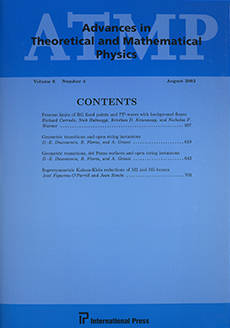Abstract
We explore the zero-temperature behavior of an assembly of bosons interacting through a zero-range, attractive potential. Because the twobody interaction admits a bound state, the many-body model is best described by a Hamiltonian that includes the coupling between atomic and molecular components. Due to the positive scattering length, the low-density collection is expected to remain stable against collapse despite the attraction between particles. Although a variational many-body analysis indicates a collapsing solution with only a molecular component to its condensate at low density, the expected atomic condensate solution can be obtained if the chemical potential is allowed to be complex valued. In addition to revealing two discrete eigenfrequencies associated with the molecular case, an expansion in small oscillations quantifies the imaginary part of the chemical potential as proportional to a coherent decay rate of the atomic condensate into a continuum of collective phonon excitations about the collapsing lower state.
Citation
George E. Cragg. Arthur K. Kerman. "On the Quantum Instability of Attractive Bose Systems." Adv. Theor. Math. Phys. 14 (1) 29 - 86, January 2010.
Information





